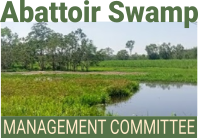Koster’s curse in community hands
About 15 years ago, Mareeba Shire's Sid Clayton spotted this unusual plant at the old Maria's Palm Nursery in Julatten and felt something suspicious. It's thought that seed had come in on packing material, or plants had been brought in as ornamentals.
Once the plant had been positively identified by Biosecurity Queensland, then alarm was raised and survey teams began combing through the surrounding area.
Koster's (Clidemia hirta) had already spread to about 25 rural properties by the time full-scale eradication program was launched. About 5 years ago, with sufficient funding, significant progress was being made to completely eliminate the plant from this small beachhead in Australia. It seemed that we might be winning in the struggle to completely eliminate Koster’s curse from Australia.
In mid 2015, however, a grim discovery was made: an extensive infestation was found along an old logging track in Wooroonooran National Park (Misty Mountains).
Koster's originates from Central America where it is just another melastome in the humid tropical lowlands and semi-arid rainforests of Mexico and Costa Rica. It found a new home in the coffee plantations of Fiji around 1885, and then rapidly spread across the Pacific, into southeast Asia and Sri Lanka. The plant is spread by fruit-eating birds and mammals. It can also move along water courses, and through contact with machinery and vehicles. The most effective control method is hand-pulling.
As bad as Koster's is, however, most people see it is just another disaster to add to the long list of natural and man-made problems that confront the Australian landscape. We have to do what we can with what we have.
The Mitchell River Watershed Management Group, in partnership with Mareeba Shire Council and Biosecurity Queensland, will lead the long-term effort to control, monitor, and reduce Koster’s Curse in the Julatten area.
Project Reference
- Log in to post comments


